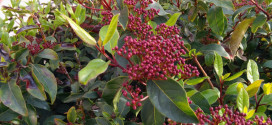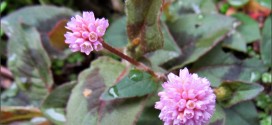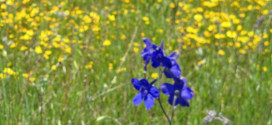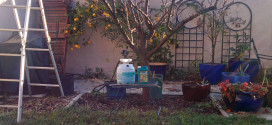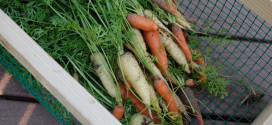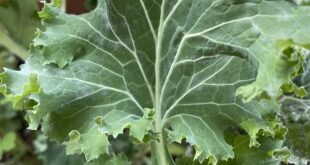Weeping Santa Rosa Plum – semi-dwarf. The Weeping Santa Rosa fruit similar to Santa Rosa, but ripens two weeks later. The Weeping Santa Rosa has beautiful weeping habit making this a remarkable landscape specimen. Also good for espalier as height can be kept to 6-8 feet. Low chill, self-fruitful. Estimated Chilling Requirement 200-400 hours below 45°F Note: In drought years, …
Read More »admin
Viburnum tinus
Viburnums are one of the most versatile genus of shrubs. They have pretty foliage and growth habits. They also have pretty, and sometimes even fragrant, flowers. The fruits are appealing to birds and other wildlife. Viburnums are a genus of more than 150 evergreen, semi-evergreen and deciduous woody plants from the Adoxaceae family. They are native primarily to Northern temperate …
Read More »Anemone
Anemones, also known as windflowers, are a diverse group, with various species blooming in spring and fall. Some have fibrous roots and are found in the perennials section of nurseries and garden centers. Others grow from tubers that are sold and planted in the fall along with spring-flowering bulbs like tulips. About This Plant Spring blooming anemones are low growing …
Read More »Pink Knotweed
Pinkhead knotweed plants (Polygonum capitatum orPersicaria capitata) are considered excellent low-growing groundcover by some gardeners. They are also called invasive pests by others. If you read up on pink knotweed information, you’ll find that the plant is banned in England and considered invasive in California. This is because of its tendency to spread where it wasn’t invited. In our Sunnyvale garden …
Read More »Grafting
What Is Grafting? The seed from a Gala apple will produce an apple tree, but it will not produce a Gala apple tree. Likewise, the seed from a Honeygold apple will not produce a Honeygold apple tree. In other words, fruit trees cannot be reproduced “true” to the original cultivar from seed. They can only be reproduced by grafting. Grafting …
Read More »Wildflower Hotspots of the Santa Cruz Mountains
Spring in the Santa Cruz Mountains brings a rebirth of native flowers in the grasslands and wooded hills. In some areas, wildflowers are blooming more profusely as a result of the Mid-Peninsula Regional Open Space District’s resource conservation efforts, aimed to ensure long-term protection of natural and cultural resources on District preserves. Prescribed burns, like the one implemented at Russian …
Read More »Tagine Chicken with Preserved Lemons
This recipe for an elegant North African stew is a dish steeped in the flavors of North Africa. Chicken serves as the protein, bathed in a blend of North African spices — cinnamon and coriander, turmeric, ginger powder and cardamom — combined with saffron and a little stock. Preserved lemons and olives added at the end provide bite. Tagines are …
Read More »Dormant Spraying of Apricots
Apricots are suspectible to several diseases: Brown fungus rot, leaf curl, and bacterial canker. Brown rot is a fungus that appears as a water-soaked lesion on a fruit. This lesion spreads until the whole fruit shrivels up like a gray fuzzy mummy. If the fruit is not removed, the spores of the fungus will drop to the ground during the …
Read More »Carrots – Circus Circus
This trio of colored carrots are creamy white, bright orange, and a deep, dark purple with orange centers. All three are crisp, smooth and evenly cylindral, growing to 8 inches long for a colorful harvest of festive roots. Their flavor is reliably sweet with a nice crunchy texture and you’ll enjoy this mix over a long season. Cut all three …
Read More »Kale
Cold-hardy and resilient, kale is an easy member of the cabbage family to grow. You can set out plants quite early in spring as long as you protect the young plants from severe cold winds with a cover. They will grow steadily for months until the weather gets too warm. You’ll get a second chance to plant kale in the …
Read More »
